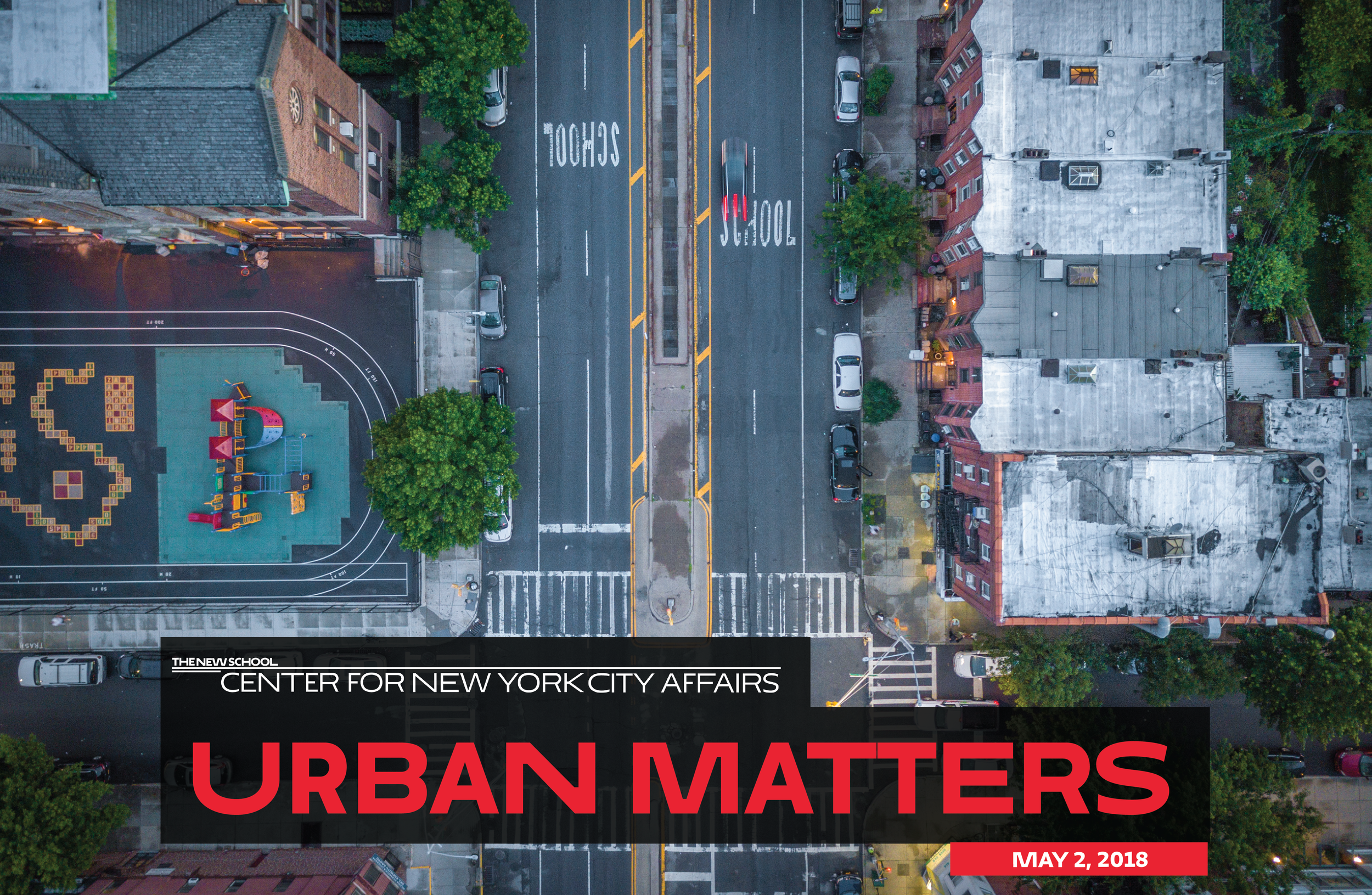May 2, 2018
Race, Class, and Choice in New York City Elementary Schools
By Nicole Mader, Clara Hemphill, and Qasim Abbas
The conventional wisdom is that most elementary school children in New York City attend their zoned neighborhood schools and that the city’s high levels of school segregation merely reflect segregated housing patterns. But a more nuanced and in some ways disquieting story emerges from our analysis presented in a new policy report from the Center for New York City Affairs, “The Paradox of Choice.”
In it, we take a first-time-ever look at school enrollment data for the approximately 715,000 students who entered kindergarten in New York City public schools over the past 10 years. And we found that while most kindergartners continue to attend their zoned schools, it’s a surprisingly narrow and shrinking majority. Only 60 percent of New York City kindergartners attended their zoned schools in the 2016-17 school year, the last year for which complete enrollment figures are available. That’s down from 72 percent in 2007-08. This explosion of school choice means that more than 27,000 kindergarten students leave their school zones every morning to attend charter schools, schools with gifted classes, dual language programs (with instruction in two languages), and traditional public schools for which they are not zoned.
While many of them are enrolled in schools close to home, one-third migrate across community school district lines, usually toward higher-income neighborhoods: from Harlem to the Upper West Side; from Crown Heights to Fort Greene; or from southeast Queens to Bayside.
Who opts out and who stays in their zoned schools varies by race, ethnicity, and neighborhood. Today, nearly 60 percent of all Black children opt out, up from 38 percent 10 years ago. This is a school choice rate considerably higher than that of White, Asian, and Hispanic children. Free lunch-eligible students and English language learners, on the other hand, are much less likely to opt out of their zoned schools than higher-income and English proficient students.
However, this varies by neighborhood: in higher-income areas, parents’ satisfaction with their local schools is often higher, so the proportion of children enrolled in their zoned schools tends to be high. In gentrifying neighborhoods, where more than half of parents exercise school choice, this means that the racial and economic diversity of the neighborhood is not reflected in the local schools. At some schools in Harlem, Bedford-Stuyvesant, Fort Greene, and Crown Heights fewer than 25 percent of children who live in the school zones attend those schools. As New York Appleseed puts it, zones provide families of means with exclusive access to the schools they like, while choice allows them to flee the ones they don’t (2013).
Students who leave tend to enroll in schools with higher levels of academic achievement, as measured by test scores, and fewer low-income classmates, our analysis found. Those who stay are more likely to find themselves in schools with higher concentrations of poverty and more classmates who don’t speak English. These schools face declining enrollments; while some elementary schools are overcrowded, at a majority of the city’s zoned elementary schools enrollment fell over the past 10 years. And because school budgets are based on enrollment these schools consequently have declining resources.
Another unintended consequence of choice is that it may be contributing to school segregation, above and beyond the impact of persistent and pervasive housing segregation. If all children in public elementary schools went to their zoned schools, our analysis found, the city’s schools would be marginally less segregated than they are now. Over 6,000 more kindergartners would attend schools with free lunch rates near the city average. About 2,300 more kindergartners would attend schools that are between 50 and 90 percent Black and Hispanic, which is the range the City’s Department of Education (DOE) established for “racially representative” schools in the “diversity” plan it released in June 2017. Children also would be more evenly distributed by race, language status, and income throughout the public schools than they are now.
Of course, there is no way of knowing how many children would actually attend their zoned schools if there were no public school choice. Some families would no doubt send their children to private or parochial schools, or move to what they deem more desirable school zones. Some would simply lie about their addresses, a tactic that has been used successfully for more than 100 years, as Betty Smith recounts in her semiautobiographical novel A Tree Grows in Brooklyn. And even if all public school kindergartners attended their zoned schools, the system would still be segregated, with 24,000 kindergartners out of 75,000 attending schools that are more than 90 percent Black and Hispanic or have a free lunch rate of more than 87 percent.
Nonetheless, for those who hoped school choice would lead to a more equitable system, this report poses one more sobering paradox. School choice may indeed give thousands of children better educational opportunities by allowing them to escape low-performing schools in their neighborhoods. But the schools they leave behind face ever-greater challenges as they struggle to serve the city’s neediest children.




